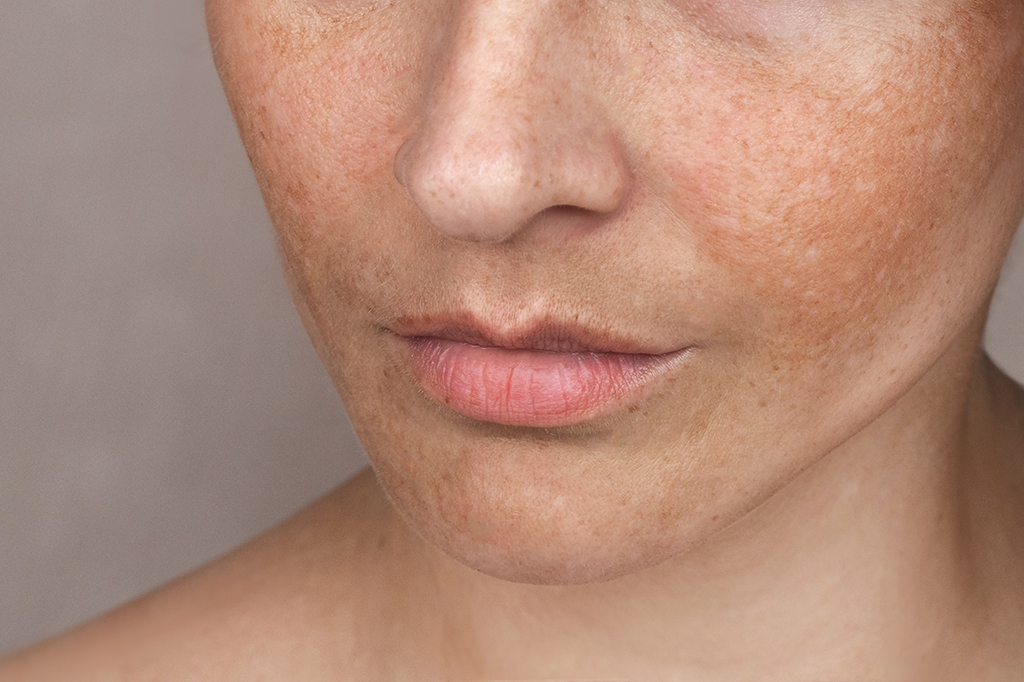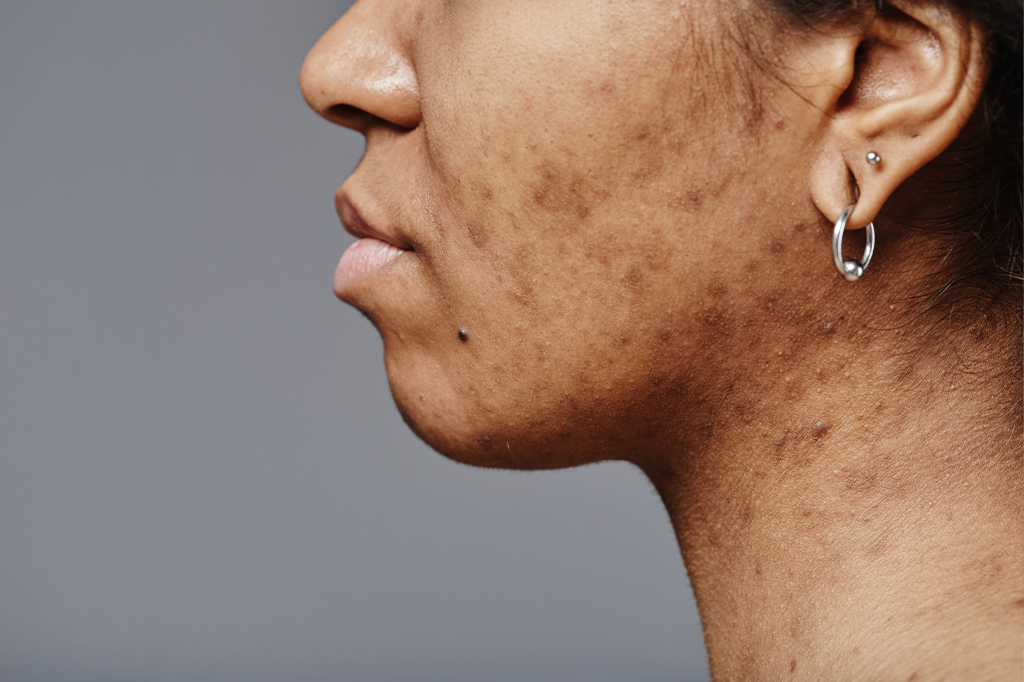If, during the years prior to menopause and its arrival, you have experienced the appearance of patchy blemishes on the skin, especially in areas exposed to the sun such as the face and hands, you are not alone.
Menopause, whose clinical definition is a period of twelve months without menstruation, is a very long and complex process in which many parts of the body are affected, and the skin is probably the first place where changes become evident.
That’s why skin blemishes or melasma are hugely prevalent among women compared to men, and can be especially intense in people with a darker complexion, as they have more melanin in their skin.
Causes of the appearance of blemishes during menopause
LDark blemishes appear on the skin when melanocytes, the cells responsible for skin pigmentation, produce too much melanin. The proliferation of these blemishes has, among others, a genetic component and an environmental component, which is accumulated sun exposure.
With menopause, and especially during perimenopause, women experience very intense hormonal changes, with very pronounced increases and decreases in the production of oestrogen and progesterone that are linked to hyperpigmentation. In particular, oestrogen helps control the production of melatonin and the way it is distributed throughout the skin. For this reason, special care must be taken with sun exposure during the years close to the menopause or if we take any hormone replacement therapy.
Main symptoms

Skin blemishes
The most common symptoms are the appearance of brown or greyish blemishes, especially on the forehead, cheeks and upper lip. This kind of lesion is called melasma.

Solar lentigo
Popularly known as age spots or liver spots, these are smaller, more defined brown or black flat spots that appear on areas of the skin with a lot of sun exposure, such as the face, hands or arms.

Post-inflammatory hyperpigmentation
It may appear at any age, as during menopause, lesions or inflammatory processes such as acne resulting from hormonal changes may also occur. When the skin heals, a dark spot of hyperpigmentation appears that may persist for months or even years if it is not treated properly.
Treatments for the appearance of skin blemishes
Mesotherapy
Mesotherapy
Mesotherapy has been referred to for several years as one of the most effective medical-cosmetic techniques for the treatment of...
Read moreTopical treatments
Topical treatments
Over time, a series of changes occur in both the skin and body; such as loss of hydration and radiance,...
Read moreChemical pee
Chemical pee
Skin renews itself every 28 days. However, over time, this process slows down. To rejuvenate their face, many people opt...
Read moreMicroneedling
Microneedling
Microneedling has been referred to for several years as one of the most effective minimally invasive techniques for treating cosmetic...
Read moreFAQs
Why do skin blemishes appear during menopause?
Hormonal imbalances in menopause coincide over time with the appearance of sun spots or lentigo caused by sun exposure throughout life. These two factors, coupled with the slowing down of the skin’s cell renewal process as we age, create the perfect breeding ground for the appearance of melasma.
What can I do to combat the appearance of skin blemishes?
To deal with this problem, it is firstly recommended to use broad-spectrum sunscreens with a high SPF to protect the skin from ultraviolet rays. It is also recommended to use topical creams with ingredients such as retinoids, which, although they are effective, can increase skin sensitivity to sunlight, so it is best to use it at night and remember to put sunscreen on the next morning; vitamin C or niacinamide to increase collagen production and provide antioxidants in order to unify the tone and improve skin resistance. In addition, there are depigmentation ingredients such as hydroquinone, kojic acid and azelaic acid that also offer good results, although they should be used with caution to avoid irritation or contact dermatitis. Lastly, there are professional cosmetic procedures that can be of great help to combat hyperpigmentation, such as chemical peels, laser sessions and microdermabrasion techniques.
Is melasma dangerous?
No, melasma caused by hormonal changes is not serious. However, it is always good to consult your doctor to rule out thyroid problems or allergic reactions that can cause melasma-like blemishes on the skin.
It is important to visit the dermatologist regularly to monitor the skin comprehensively, especially if blemishes or lentigo spots with irregular and poorly defined edges are detected, which may indicate malignancy.

